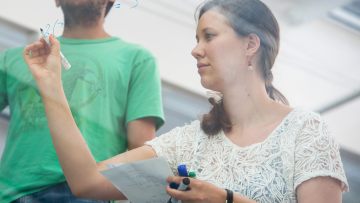The chromatic profile of locally bipartite graphs
Illingworth, F
JOURNAL OF COMBINATORIAL THEORY SERIES B
volume 156
343-388
(24 May 2022)
The chromatic profile of locally colourable graphs
Illingworth, F
COMBINATORICS PROBABILITY & COMPUTING
volume 31
issue 6
976-1009
(10 May 2022)
Quantification of vascular networks in photoacoustic mesoscopy.
Brown, E
Lefebvre, T
Sweeney, P
Stolz, B
Gröhl, J
Hacker, L
Huang, Z
Couturier, D
Harrington, H
Byrne, H
Bohndiek, S
Photoacoustics
volume 26
100357-100357
(01 Jun 2022)
Non-equilibrium growth of a binary alloy
Fowler, A
IMA Journal of Applied Mathematics
volume 87
issue 3
354-379
(10 May 2022)
Regularity of quasigeodesics characterises hyperbolicity
Hughes, S
Nairne, P
Spriano, D
(17 May 2022)
http://arxiv.org/abs/2205.08573v2
Correction to: Multiple zeta values in deformation quantization (vol 222, pg 79, 2020)
Banks, P
Panzer, E
Pym, B
INVENTIONES MATHEMATICAE
volume 229
449-449
(16 May 2022)
http://gateway.webofknowledge.com/gateway/Gateway.cgi?GWVersion=2&SrcApp=PARTNER_APP&SrcAuth=LinksAMR&KeyUT=WOS:000796333200001&DestLinkType=FullRecord&DestApp=ALL_WOS&UsrCustomerID=4fd6f7d59a501f9b8bac2be37914c43e
Holographic S-fold theories at one loop
Behan, C
SciPost Physics
volume 12
issue 5
(06 May 2022)
Bernadette Stolz has received a L'Oréal-UNESCO For Women in Science UK and Ireland Rising Talent fellowship in the category of Mathematics and Computer Science.
Backward Euler-Maruyama Method for the Random Periodic Solution of a Stochastic Differential Equation with a Monotone Drift
Wu, Y
JOURNAL OF THEORETICAL PROBABILITY
(11 May 2022)
Balancing connected colourings of graphs
Illingworth, F
Powierski, E
Scott, A
Tamitegama, Y
(10 May 2022)


